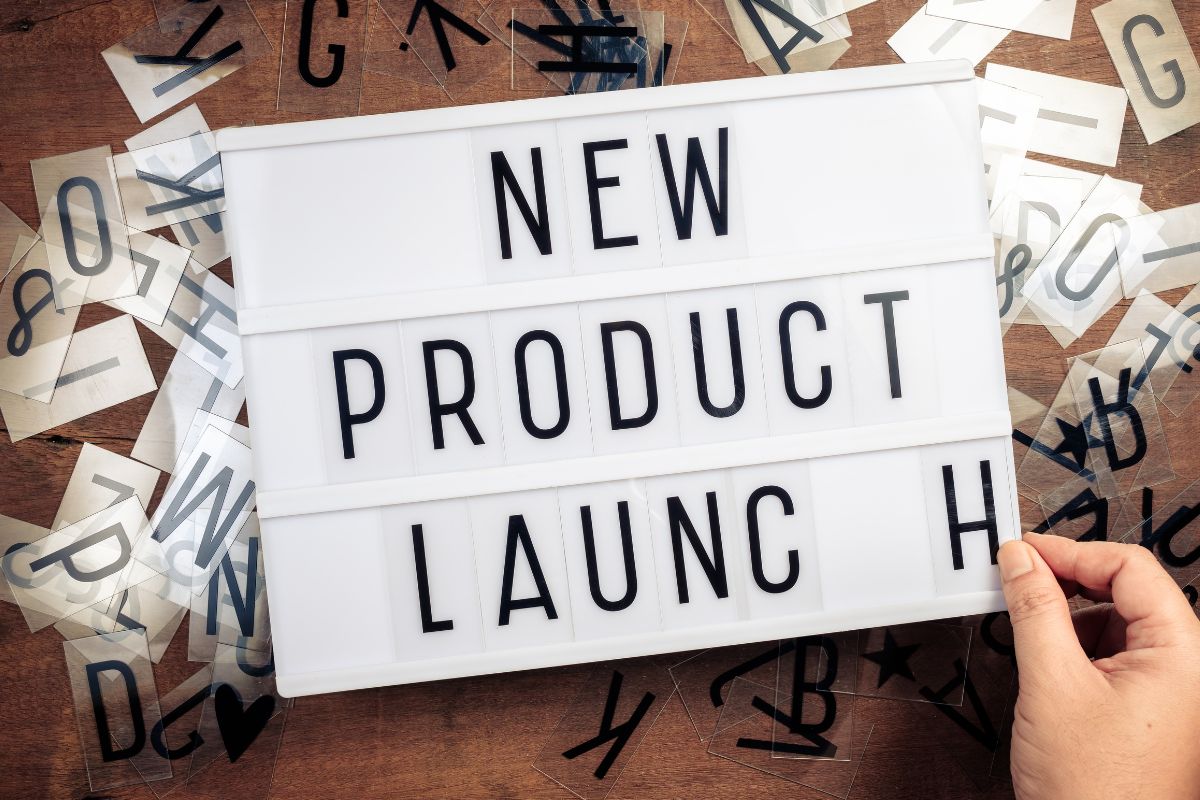In the world of business, white-label products represent a strategic opportunity for companies looking to expand their market presence without investing in new product development. These products are manufactured by one company and then branded and marketed by another, allowing you to offer a range of items under your brand that you haven’t had to manufacture. This model of business is particularly advantageous as it streamlines the path to market, providing you with a cost-effective method of diversifying your offerings and focusing on building your brand’s reputation.
Understanding the landscape of white-label products can give your business a competitive edge. With numerous options available, selecting the best white-label products for your brand requires considering factors such as market demand, quality, and alignment with your existing product lines. You’ll want to partner with manufacturers known for their industry-leading standards, ensuring that the items you choose to stand behind as your own maintain the level of quality your customers expect.
Successfully integrating white-label products into your business strategy hinges on making informed branding and marketing decisions. By selecting products that resonate with your audience and represent your brand’s values, you can cultivate customer trust and loyalty. Remember that your choice of white-label products can significantly influence your market positioning, so it’s crucial to choose wisely and tailor your approach to meet specific market needs.
Understanding White Label Products
In the ever-evolving landscape of retail and e-commerce, white-label products offer a strategic avenue for expanding product lines and entering new markets. By understanding the essentials of white-label goods and their role in brand strategy, you can leverage them to elevate your business presence.
Definition and Basics
White-label products are generic items produced by a manufacturer but sold under a retailer’s or another company’s brand. As such, you have the freedom to rebrand these items as if they were your own. This provides an accessible entry point for businesses that wish to sell products without investing in development and production.
Distinction Between White Label and Private Label
The key difference between white-label and private-label products lies in exclusivity. Private label goods are exclusively made for and sold by a single retailer, featuring a unique branding and proposition. On the contrary, white-label products can be sold by multiple resellers, each branding the product to their preference.
Benefits of White Labeling
One of the main benefits of white labelling is the ability to quickly market a product with your branding without the complexities of manufacturing. This saves you time and resources, allowing you to focus on building your brand and customer base. Furthermore, offering white label products can position your brand as an exclusive provider in the eyes of your customers, despite the availability of the product under different brands elsewhere.
Common Challenges in White Labeling
Despite its advantages, white labelling does have its hurdles. Branding can be a double-edged sword; if the product has quality issues, it directly affects your brand’s reputation. Finding a reliable manufacturer and ensuring consistent product quality are crucial steps in mitigating these risks. It’s vital that you understand the extent of customization allowed to ensure the product aligns with your brand identity and values.
Starting a White Label Business

When launching a white-label business, your success hinges on thorough market research, solid business planning, strategic partner selection, and compelling brand narrative development. Each step plays a crucial role in building a foundation that can support your white-label offerings.
Market Research and Identifying Niches
Market Research: Delving deep into market trends and consumer demands is pivotal. You want to identify niches where demand exists but is currently underserved. Look for indicators of market gaps through customer reviews, forums, and competitor analysis. This targeted approach ensures your products resonate with a specific audience.
Identifying Niches: Your aim is to pinpoint a niche with growing consumer interest but low competition. Leverage data analysis tools to assess search trends and identify potential niches. For example, you might discover an increasing demand for eco-friendly personal care products.
Investment and Business Planning
Investment: Calculating the initial investment required for your white-label business is critical. This includes costs for product sourcing, branding, marketing, and operations. Create a detailed budget and keep in mind the potential for unexpected expenses.
Business Planning: Your business plan should outline your business model, market entry strategy, revenue projections, and operational workflow. This document is not only a roadmap but also essential for attracting potential investors or financial support from banks.
Choosing the Right Suppliers
Select suppliers carefully, as they are the backbone of your product quality and supply chain reliability. Criteria for choosing the right suppliers might include their production capabilities, industry certifications, quality assurance processes, and ability to scale with your business. Forge relationships with suppliers who are aligned with your business goals and can consistently meet your standards.
Building a Brand Story and Recognition
Brand Story: Articulating a compelling brand story creates an emotional connection with your customers. It should be authentic and reflect the values that your business stands for, such as sustainability or innovation. This narrative is a differentiator in a crowded marketplace.
Brand Recognition: Develop consistent branding materials and messaging across all platforms to foster brand recognition. Utilize social media, content marketing, and strategic partnerships to amplify your brand message. When your white-label product is synonymous with a strong brand story, customer loyalty tends to follow.
Product Selection Strategies

When selecting white-label products to bolster your inventory, you should focus on market analysis and customer demand, emphasize high quality, and lean into product differentiation through customization.
Analyzing Market Trends
Your first task is to conduct thorough market research. Identify trending products that align with consumer behaviours and interests, ensuring you tap into existing market momentum. For example:
- Review trade publications to become aware of emerging trends.
- Utilize social media analytics to gauge consumer discussions and preferences.
Selecting High-Demand Products
Choose products that have high demand among consumers, as this is indicative of their potential success. Consider these factors:
- Sales data of similar items
- Search engine trends for specific product categories
High-quality, white-label products tend to have better consumer reception, so be stringent in your selection process.
Customizations and Differentiation
Lastly, differentiate your products by adding unique elements. Customizations can help your brand stand out and appeal to target customers. This can be achieved by:
- Offering product variations, such as color or size.
- Including distinctive packaging that resonates with your brand identity.
Remember, effective differentiation helps create a competitive edge in a crowded marketplace.
Marketing and Sales Tactics

To excel in leveraging white-label products, you must adopt robust marketing and sales tactics that attract and retain customers. Carving out a profitable niche in a competitive market hinges on thorough planning and strategic pricing, along with maximizing online sales channels and an efficient sales funnel.
Developing a Marketing Plan
Strategize your marketing plan by identifying your target demographic and the unique selling propositions of your white-label products. This involves conducting market research to understand customer needs and crafting marketing messages that resonate with that audience. Your marketing plan should include specific goals, such as increasing website traffic, and measurable objectives to track progress.
Online Sales Channels and E-commerce
In the realm of e-commerce, your online store is your most critical sales channel. Prioritize user experience with a clear, navigable design that supports quick conversions. Optimize your product listings with high-quality images and SEO-friendly descriptions to capture organic traffic and enhance visibility on search engines. To supplement your direct sales, consider listing your products on popular marketplaces to expand reach.
Pricing Strategies and Profit Maximization
Effective pricing strategies are essential for sustaining profits. Conduct a competitive analysis to ensure your pricing is competitive yet profitable. An approach such as keystone pricing, where you set retail prices at double the wholesale cost, can be a starting point. Also, consider using psychological pricing, like setting prices just below whole numbers ($19.99 instead of $20) to make products seem more affordable.
Creating an Effective Sales Funnel
Your sales funnel is a journey that guides prospective buyers to become paying customers. A well-structured funnel systematically educates and nurtures leads through stages—from awareness to consideration to purchase. Utilize various marketing touchpoints, like email marketing and retargeting ads, to keep your brand top-of-mind and bring customers back to the online store. Regularly analyze funnel performance to identify and address any bottlenecks.
Operational Management

In white-label product management, ensuring efficient operations plays a pivotal role in your business sustainability and profitability. This encompasses the careful oversight of high-standard manufacturing processes, strategic inventory control, and a robust shipping and delivery system.
Manufacturing Process and Quality Control
Your success hinges on the consistent quality of the products you provide. This begins with selecting a manufacturer with a meticulous manufacturing process that adheres to high-quality standards. Ensure the quality control measures are stringent and the products go through rigorous testing phases. Consistency in your product’s quality not only builds trust with your customers but also cements your brand’s reputation.
Inventory and Supply Chain Management
Efficient inventory management is critical. You must collaborate with suppliers who can reliably stock the necessary materials to avoid production hiccups. Utilize just-in-time inventory systems to minimize costs and ensure product freshness. Your supply chain management should be capable of adjusting to demand fluctuations swiftly, maintaining a balance between overstocking and stockouts.
Shipping and Delivery Logistics
Offer delivery options that cater to various customer preferences, ranging from standard to expedited shipping. Organize your delivery logistics to optimize transit times and reduce costs. An effective logistics strategy ensures that your end customers receive their orders promptly and in excellent condition, which is key to maintaining customer satisfaction and loyalty.
Expanding Product Lines

When you expand your product lines, you’re not just adding more options to your catalogue; you’re strategically positioning your business for growth. By tapping into print-on-demand services, venturing into new markets, or leveraging influencer partnerships, you create avenues for increased revenue and customer engagement.
Print on Demand and Custom Products
With print on demand (POD), you can offer bespoke products without the traditional inventory risks. This service allows you to create custom products like t-shirts, mugs, and phone cases that are only printed once your customer places an order. Here’s how you can proceed:
- Select a niche: Focus on a specific niche to stand out.
- Choose your products: Decide on a range of items that fit your brand.
- Marketplaces: Integrate with online shopfronts like Etsy or Shopify to reach a wider audience.
Diversifying into New Markets
Stepping into new markets can be daunting, but it’s an effective way to broaden your product portfolio. Consider the following:
- Research: Find a market gap where your products can shine.
- Test: Introduce a few products to gauge consumer interest.
- Adaptation: Ensure your products resonate with the cultural and functional needs of the new market.
Collaborations and Influencer Partnerships
Collaborating with influencers can catapult your products into the spotlight. A well-strategized partnership can help you:
- Target demographics: Influencers already have the audience you want to reach.
- Content creation: Use their skills to create authentic content that showcases your products.
- Trust: Benefit from the trust they’ve built with their followers to enhance your brand’s credibility.
By focusing on these actionable strategies, you can efficiently expand your product lines and solidify your brand’s presence in the marketplace.
Leveraging Technology and Platforms

In the realm of white-label products, your use of technology and platforms is crucial for ensuring successful market penetration and customer reach. You’ll need to integrate tightly with e-commerce environments, harness specialized white labelling software, and apply data analytics to glean crucial business insights.
E-Commerce and Marketplace Integration
Embedding your white-label products into e-commerce platforms and online marketplaces is a powerful way to tap into established customer bases. These platforms offer a ready-to-go sales infrastructure, which means your products can be listed, promoted, and sold with ease. For instance, integrating with giants like Amazon or Shopify allows for seamless product listings and customer transactions.
White Labeling Software and Tools
White Labeling Software and Tools are the backbone of launching your product lines swiftly. These tools enable customization of products to fit your brand, often with drag-and-drop simplicity. Whether you are labelling a CRM platform or a physical good, these resources help maintain brand consistency and professional aesthetics across your product offerings.
Data Analytics for Business Insights
Utilize data analytics to drive strategic decisions and optimize your white-label product performance. Analytical tools can dissect customer behaviour, sales trends, and market dynamics, providing you with actionable insights. This can mean the difference between a product that flounders and one that flies off the virtual shelves.
Each of these strategies involves a considered approach to the specific technologies and platforms integral to white-label product success. By harnessing the right mix, you strengthen your competitive edge in a bustling digital marketplace.
Customer Relations and Experience

Creating a robust customer relations framework is pivotal for white-label products. Your approach to customer experience and support, informed by feedback, lays the groundwork for building loyalty and strengthening your branding.
Enhancing Customer Experience
You want every interaction with your product to exceed customer expectations. Customizing your software interface to align with your clients’ brand ensures a seamless user journey that reflects positively on your product. Implement features that simplify processes for end-users, as emphasized in studies about user experience strategy, to cultivate a positive association with your brand.
Feedback and Customer Support
Actively seek and incorporate customer feedback to show you value their input, which, in turn, boosts your support services. Use direct channels like surveys or focus groups to obtain actionable insights. A dedicated support team trained in your product’s specifics ensures swift and effective problem-solving, underpinning your commitment to high-quality service.
Building Customer Loyalty
Loyalty is not won overnight. It’s built through consistent, positive experiences and a deep understanding of customer needs. Highlighting the quality and value of your white-label goods—as comparable to or surpassing branded alternatives—can alter perceptions and drive loyalty. It’s essential to communicate the equivalence, or even superiority, of private labels to branded goods. Regular engagement and personalized experiences also nurture a long-term relationship with your clients.
Legal Considerations and Compliance

Venturing into the world of white-label products requires careful attention to legalities to protect your business. Ensure that you navigate the complexities of intellectual property, adhere strictly to regulatory measures, and formulate clear contracts with suppliers to maintain compliance.
Intellectual Property Rights
Understanding intellectual property rights (IPR) is crucial when dealing with white-label products. You need to ensure that your products do not infringe upon existing trademarks, patents, or copyrights. Secure the necessary licenses, and be mindful that some suppliers may hold the IPR, which could limit modifications to the product.
Regulatory Compliance
Regulatory compliance covers a broad spectrum of laws and standards that your product must meet. These can include safety regulations, labelling requirements, and industry-specific guidelines. For food safety and quality, visit the Packaging & labelling considerations to understand more about global food product declarations. Meanwhile, be aware of standards such as those put forward by the FDA in the United States, which focuses on accurate labelling and ingredients disclosure.
Contracts and Agreements with Suppliers
A robust agreement with your suppliers is non-negotiable. These contracts should cover all aspects of your partnership, including:
- Delivery timelines: When will products be delivered?
- Quality specifications: What standards must be met?
- Pricing and payment terms: How and when will payments be made?
- Liability and indemnity clauses: How are disputes resolved?
It’s imperative to have clear, written contracts to avoid potential legal issues and to ensure a smooth supply chain. For more details on compliance for small enterprises, you might check Food Labelling Regulation compliance.
Frequently Asked Questions
In this section, you’ll find direct answers to common queries about white-label products, helping you understand how they can be a valuable addition to your business strategy.
How can you identify profitable white label products to sell?
Identify profitable white-label products by conducting market research to understand current trends, demand, and competition. Analyze sales data and customer feedback to pinpoint products with high sales potential and margins. Consider items that complement your existing product line while meeting a clear customer need.
What distinguishes white label from private label goods?
White-label goods are generic products manufactured by one company and sold to multiple retailers to brand as their own. In contrast, private label goods are exclusively produced for one retailer who has more control over the product specifications, quality, and branding. The difference mainly lies in exclusivity and brand control.
In what ways can white labeling be beneficial to your business?
White labelling can expand your product offerings without the need for R&D costs. It allows for faster market entry and brand development, as you can sell established products under your own brand. Additionally, it boosts brand visibility and loyalty by offering more to your existing customer base.
What are the steps involved in finding a reliable white label manufacturer?
To find a reliable white-label manufacturer, start by defining your product requirements and quality standards. Research and compile a list of reputable manufacturers, check references, and study their quality assurance processes. Finally, establish clear communication and an agreement that outlines product specifications and delivery expectations.
Which categories of digital products are successful under a white label model?
Digital products like software, apps, and cloud-based services often thrive under a white-label model. These offerings can be easily branded and scaled, providing solutions like website builders, CRM systems, or marketing automation tools that businesses can offer to their clients as their own.
How do white label companies in the USA compare to international suppliers in terms of quality and cost?
White-label companies in the USA are known for adhering to strict quality standards and regulations, which can justify a higher price point. International suppliers might offer cost advantages due to lower production expenses, but it’s important to vet them thoroughly to ensure quality does not suffer.



